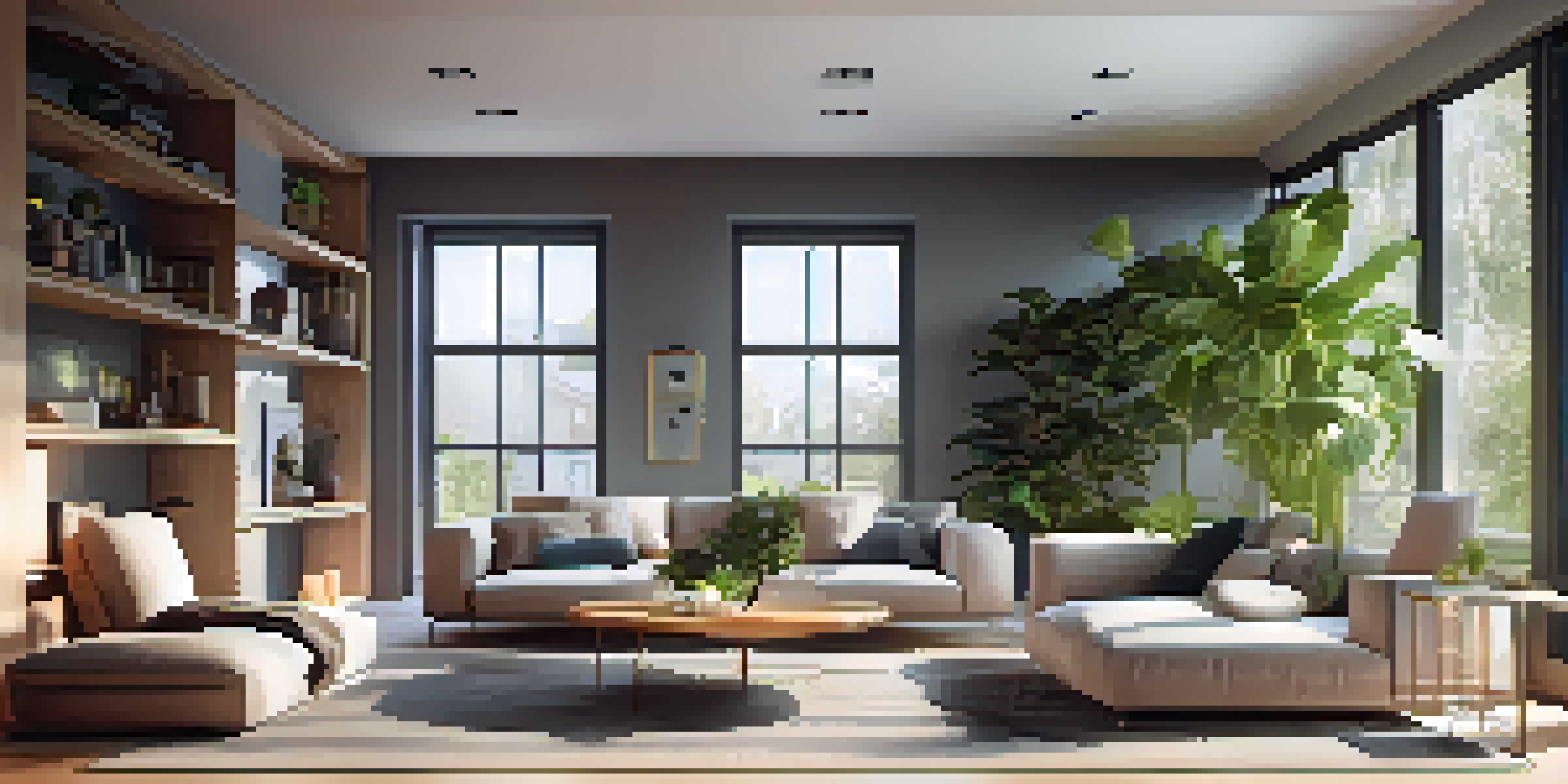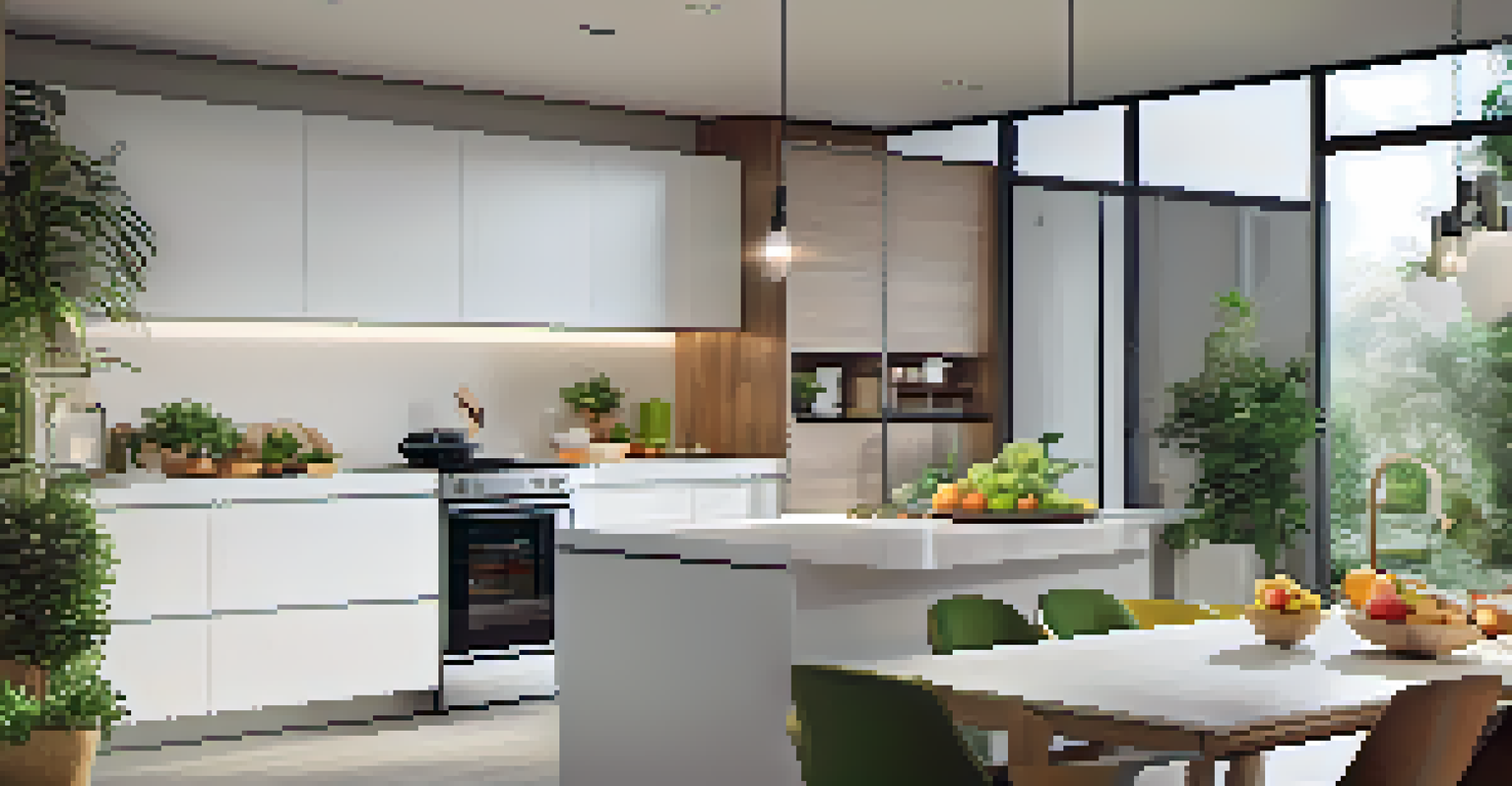Setting Up Home Automation: Common Pitfalls to Avoid

Neglecting Compatibility Between Devices
One of the first pitfalls to avoid when setting up home automation is neglecting device compatibility. Imagine buying a smart light bulb that won't connect to your smart home hub; frustrating, right? Before making any purchases, always check if your devices can work together seamlessly. A little research goes a long way in ensuring that your system operates smoothly.
The greatest danger in times of turbulence is not the turbulence; it is to act with yesterday's logic.
Compatibility issues can lead to wasted time and money, not to mention the headaches of trying to troubleshoot problems. For example, if your thermostat doesn’t communicate with your security system, you might miss out on valuable features like energy savings or security alerts. Always review product specifications and user reviews to gauge compatibility before you buy.
In the end, choosing devices from the same ecosystem can simplify your setup. For instance, if you invest in a specific brand of smart speakers, consider sticking to that brand for other products. This approach not only enhances compatibility but also often leads to a more cohesive user experience.
Overlooking Security Measures
When diving into home automation, many people tend to overlook security measures. After all, who wants to think about cyber threats when they’re excited about their new gadgets? However, neglecting this aspect can leave your home vulnerable to cyber attacks. Just like locking your doors, securing your devices is essential.

Make sure to change default passwords and enable two-factor authentication on devices that support it. For example, if you set up a smart camera, a strong, unique password can help protect against unauthorized access. Regular software updates are also crucial, as they often include security patches that fix vulnerabilities.
Ensure Device Compatibility
Researching device compatibility before purchase can prevent frustrating connectivity issues and enhance your smart home experience.
A good rule of thumb is to treat your smart home like your personal data. Just as you wouldn’t share your bank password with anyone, avoid sharing your smart home access with untrusted individuals. Taking these steps can significantly reduce the risk of breaches, ensuring your home remains a safe haven.
Ignoring the Importance of User Interfaces
Another common pitfall in home automation is ignoring the importance of user interfaces. A sophisticated system is only as good as its ease of use. If you find yourself frustrated with a complicated app or controller, you may be less likely to use your smart devices consistently, defeating the purpose of automating your home.
Technology is best when it brings people together.
Consider how you’ll interact with your devices daily. For instance, a user-friendly app that allows you to control lighting, temperature, and security features from one dashboard can enhance your experience. Look for systems that offer intuitive interfaces, making it easy to automate tasks with a few taps or voice commands.
Moreover, training your family members on how to use the system is crucial. If everyone understands how to navigate the interface, it fosters a sense of ownership and encourages more frequent use. A seamless user experience can make your home automation setup a delight rather than a chore.
Failing to Plan for Future Expansion
When setting up your home automation system, failing to plan for future expansion can lead to frustration down the line. Home automation is an evolving field, with new technologies and devices emerging regularly. If you don’t consider your long-term goals, you may find yourself limited by your initial choices.
For example, if you start with a simple lighting system but later want to add security cameras or smart locks, you might face compatibility issues. It’s wise to choose a hub or platform that supports a wide array of devices and protocols, giving you the flexibility to expand as your needs grow.
Prioritize Security Measures
Implementing strong passwords and regular updates is essential to protect your home automation system from potential cyber threats.
Taking the time to envision where you see your smart home in a few years can guide your initial purchases. Investing in a scalable system not only saves you time and money later but also enhances your overall smart home experience. Think of it like planting seeds; choose a variety that will flourish together.
Neglecting Regular Maintenance and Updates
Regular maintenance and updates are often neglected in home automation setups, leading to decreased efficiency. Just like a car needs oil changes and tune-ups, your smart home devices require attention too. Ignoring updates can leave your system vulnerable to bugs and security flaws, undermining the convenience they offer.
Schedule periodic checks to ensure all devices are functioning correctly. For instance, if you notice your smart thermostat isn’t as responsive as it used to be, it might be time for an update or a reset. Many devices offer automatic updates, but being proactive can help catch issues before they escalate.
Additionally, don’t hesitate to revisit your setup periodically. As technology evolves, you may find better options or features that could enhance your system. A little maintenance can go a long way in keeping your home automation running smoothly and efficiently.
Setting Up Complex Automation Routines Too Soon
Jumping into complex automation routines too soon can be overwhelming and counterproductive. While the idea of having your coffee brewed and your lights dimmed at specific times might sound appealing, it’s essential to start simple. Gradually introducing automation allows you to understand how each device interacts with one another.
For example, you might begin with basic routines like turning on lights at sunset or adjusting the thermostat when everyone leaves home. Once you're comfortable, you can gradually add more advanced routines based on your lifestyle. This step-by-step approach helps prevent frustration and keeps your system manageable.
Plan for Future Expansion
Choosing a scalable home automation system allows for future upgrades and device additions without compatibility concerns.
Moreover, as you become familiar with your devices, you’ll discover more ways to enhance your routines. This gradual progression can lead to a more enjoyable and efficient home automation experience, allowing you to appreciate the technology without feeling overwhelmed.
Forgetting About Energy Management
In the excitement of setting up home automation, it’s easy to overlook energy management features. However, a well-designed system should not only enhance convenience but also improve energy efficiency. Ignoring this aspect can lead to higher utility bills, counteracting the benefits of automation.
Consider integrating energy-saving devices like smart thermostats and lighting. These tools can optimize energy usage based on your habits, reducing waste. For instance, a smart thermostat can learn your schedule and adjust the temperature when you’re away, saving you money without sacrificing comfort.

Additionally, regularly monitor your energy usage through your home automation app. Many platforms provide insights into consumption patterns, allowing you to make informed decisions. By prioritizing energy management, you can enjoy the perks of automation while keeping your budget in check.